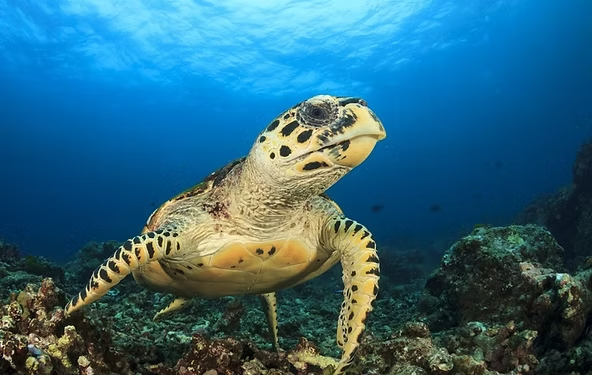Hawksbill Sea Turtles: Guardians of Coral Reefs
Hawksbill turtles are named for their narrow, pointed beaks and distinctive shells with overlapping scales, producing a serrated edge. Their colorful shells, historically prized as “tortoiseshell,” have made them vulnerable to human exploitation.
Habitat and Diet
Hawksbill turtles are mainly found in tropical oceans, especially around coral reefs. They feed primarily on sponges, which they extract from reef crevices using their pointed beaks. Their diet also includes sea anemones, jellyfish, mollusks, crabs, fish, sea urchins, and marine algae. Coastal areas with abundant food and sandy nesting sites are preferred, while deeper waters are typically avoided. Hawksbills play a crucial role in maintaining the health and balance of coral reefs and seagrass beds.
Reproduction
Like other sea turtles, hawksbills undertake long migrations from feeding grounds to nesting beaches, often returning to the same beaches where they hatched. Females lay 130–160 eggs in shallow nests on sandy beaches every three to four years. Eggs hatch in approximately 60 days. Hatchlings face numerous predators, including crabs and gulls, during their journey from nest to sea.
Threats
Hawksbill turtles are critically endangered due to human activity. Their beautiful shells have been sought after for centuries, leading to overexploitation. Despite an international ban on commercial trade in hawksbill shells in 1993, illegal trade continues. Other threats include habitat destruction, climate change, and predation by natural predators like sharks, crocodiles, and octopuses.
Conservation Efforts
Conservationists aim to protect hawksbill habitats through marine sanctuaries and aquatic preserves. Researchers, such as Photo Ark EDGE Fellow Daniel Arauz, collect population data to raise awareness and improve conservation strategies in local communities.

